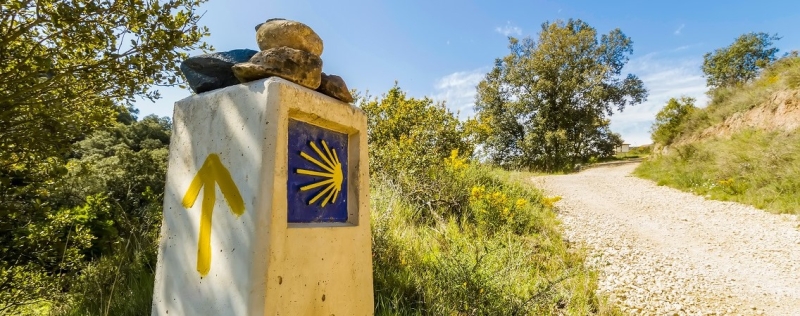
Camino de Santiago, or the Way of Saint James, is one of the oldest European pilgrimage routes. At the end of the 20th century, it also became popular among travelers without religious purposes. Our author Natalya Vershinina walked 700 km along the Camino del Norte, the northern part of this route. She shares her impressions and some nuances of the trip.
You can read about the features and life hacks on the path of St. James in this article.
How to get there
There are currently no direct flights between Russia and Spain. The cost of tickets from Moscow with transfers in Istanbul, Cairo or Abu Dhabi starts from 42,000 rubles one way*.
Entry rules
A Schengen visa is required to travel to Spain. All COVID restrictions have been lifted.
Hi, my name is Natasha and I am a fan of long walks. The Way of Santiago had long been my tourist dream, but for the company I needed a proven person, seasoned by adventure. The puzzle came together when my sister agreed to go with me. Having put our backpacks on our shoulders, we began the most unusual month-long journey.
Why we decided to walk
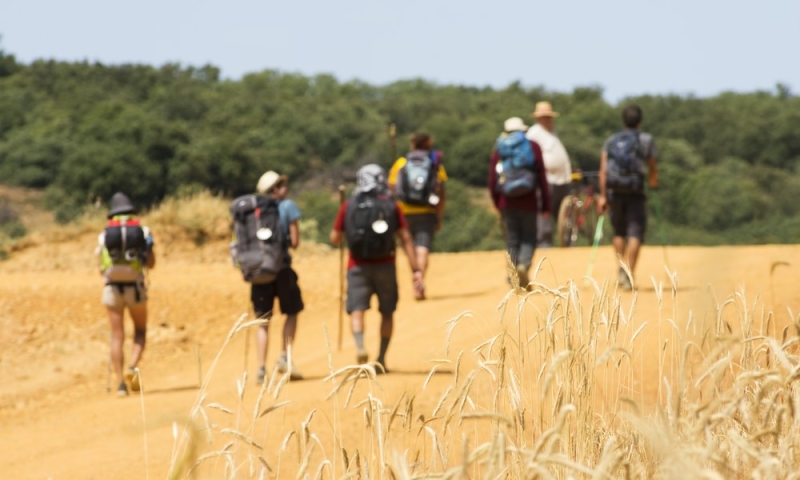
The Santiago Way is the best way to get to know that Spain that you won’t see or experience on a road trip: landscapes, deserted paths, cozy towns and villages, everyday life and simple everyday life of non-tourist places await you. The northern route attracted us with the opportunity to admire the Atlantic Ocean, along which almost the entire route runs.
In addition, this is a budget travel option with huge savings on transport and accommodation.
Where we started our journey
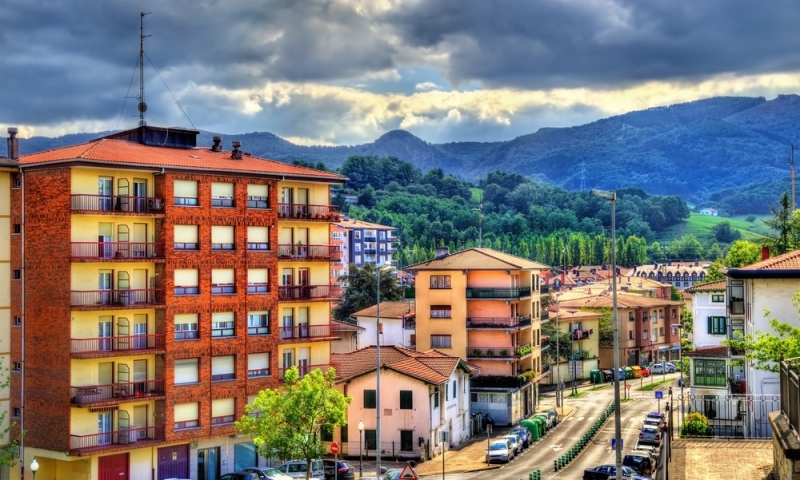
The northern route, 825 km long, begins in the city of Irun. Having shortened the route a little, we moved the start to the capital of the Basque Country – Bilbao. But you can start from any point along the route. The main thing is to walk to the city of Santiago de Compostela the last 100 km (200 km by bike). Many local pilgrims travel in sections, returning every month or year to where they left off last time.
Bilbao
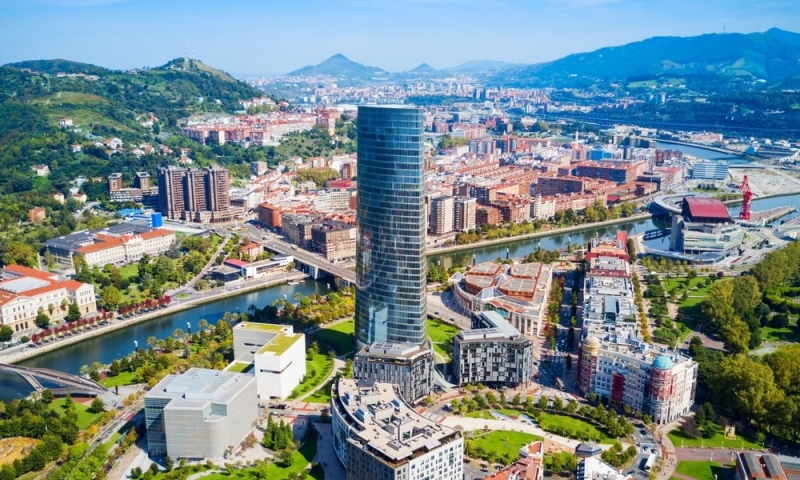
After receiving our credential (a kind of pilgrim’s passport) and putting the first stamp, we wandered a little around the large port city, filled with history. Local residents honor the traditions of their people and cherish the Basque language, one of the official languages in Spain. They are friendly, but, like northerners in general, they are more reserved than the liberated inhabitants of the Spanish south.
Despite its industrial nature, Bilbao is a curious city. One of the iconic places is the Guggenheim Museum. If you don’t have time to visit it, it will also be interesting to see the architecture of the building in the form of a futuristic ship and sculpture nearby. For example, you can touch the leg of a giant metal spider.
Portugalete and the first night in the albergue
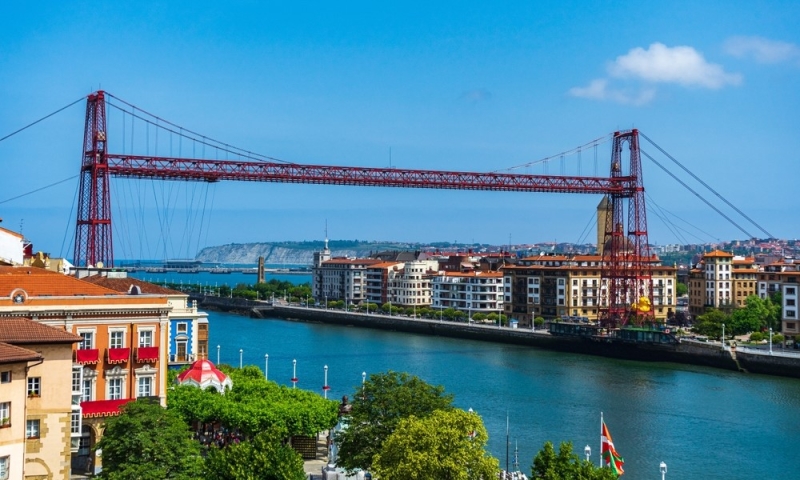
Our first albergue on the way – that’s what special hostels for pilgrims are called – is located in the gym of the municipal building. There were bunk beds for 30 people, lockers for things, a clean shower and a small kitchen. Payment is a donation, that is, any amount desired, as in many albergues that are supported by the state. Everything was unusual and exciting: searching for a hostel using shell signs, checking in, meeting other pilgrims for the first time at dinner.
The people on the Way of Santiago are one of its most important parts. This is a community that you feel part of. We met pilgrims of all ages: from active pensioners and students walking alone, to a young mother with a baby in a stroller. The route is traversed by travelers from all over the world, but the fact that we came from Siberia often caused surprise: many considered it an eternally cold and inaccessible land.
Camino del Norte is not the most crowded path, everyone stretches along the paths at their own pace. We walked for many kilometers in blissful solitude to the sounds of the rustling sea and the singing of birds. But at the end of the day it was nice to meet “my” people at the hostel. We called two elderly, fleet-footed women from Norway “our girls.”
In the city of Portugalete you can relax on the embankment of the Nervión River, admiring the sunset and Bizcayan Transport Bridge, included in the UNESCO World Heritage List. Thanks to a suspended gondola that moves between the banks, the bridge was the first in the world to provide non-stop navigation along the river. We looked at him, falling asleep in sleeping bags on the second floor of the beds of our modest overnight stay.
Castro-Urdiales
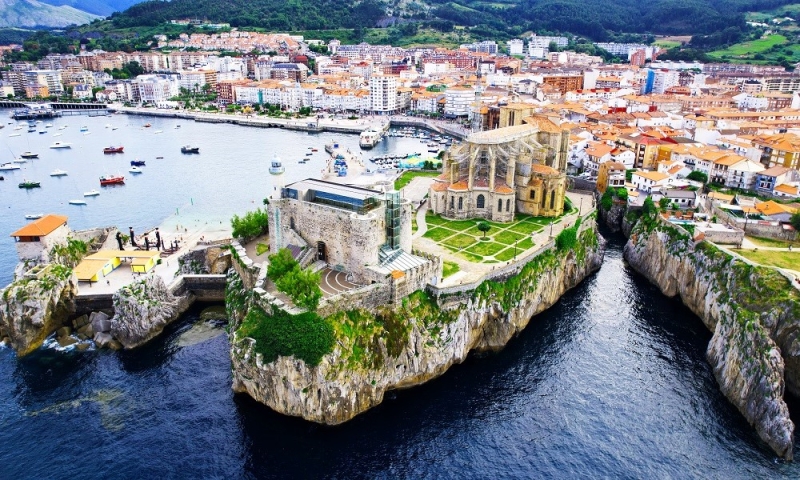
After leaving the Basque Country, we finally reached the Cantabrian Sea on the spacious La Arena beach, comfortably located in a bay between green hills. From that day on, we tried to visit almost all the picturesque beaches along the way, even if it was necessary to spend an additional 4–5 km on the road to them. Thus we found treasures for the eyes and memories.
Then the path went along the cliff above the ocean along a spectacular road with wooden railings. Having passed it, we stopped to rest on a large field of bright green grass right above a cliff and an endless blue expanse. Here, for the first time, we clearly realized why we decided on such an adventure – to see it all live, transfixed by the beauty every hundred meters.
In the charming coastal Castro-Urdiales you can stroll along the bright promenade and narrow ancient streets. And then climb to the impressive 13th century Gothic church Santa Maria de la Asuncion and Santa Ana Castle, overlooking the city harbor.
Loredo
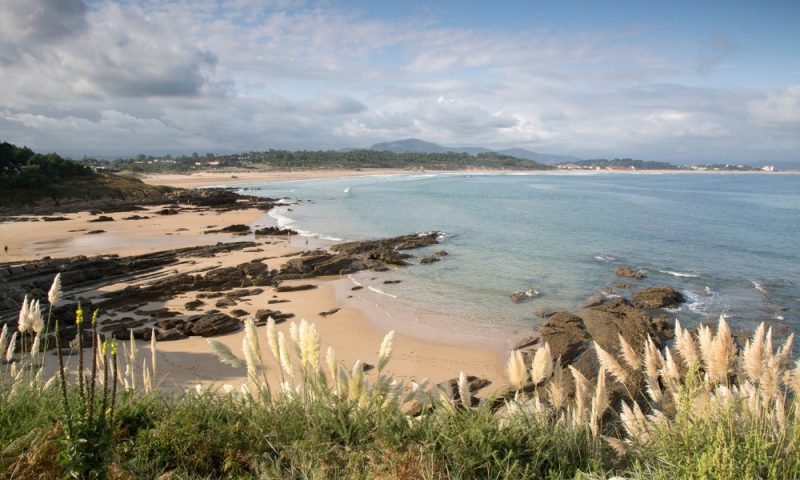
We reached this town at the end of a hot day, tired and thirsty. In an albergue located in the active medieval monastery of Casa de la Trinidad, we were greeted with a glass of delicious lemon water by real nuns. Later they served and blessed the meal shared by the pilgrims. Such evenings were remembered for the warm atmosphere and conversations from which you learned about the fates and motives of other travelers. We slept in the monastic cell under the ancient vaults of the church, feeling like real pilgrims.
The next morning, a huge five-kilometer La Salve beach awaited us. And a fabulous picture: pilgrims with large backpacks, silently walking under the soft dawn rays along the endless sandy shore of the ocean.
Closer to Noha VillageA high rocky hill rose in front of us, extending into the sea. At first we joked that the path lay right through it. But when they saw from afar little men with backpacks, climbing and clinging to rocks and bushes, they stopped joking. This part of the road was not easy: the clay path passed over a cliff and sometimes climbed steeply upward. But the breathtaking views made up for everything.
Santillana del Mar
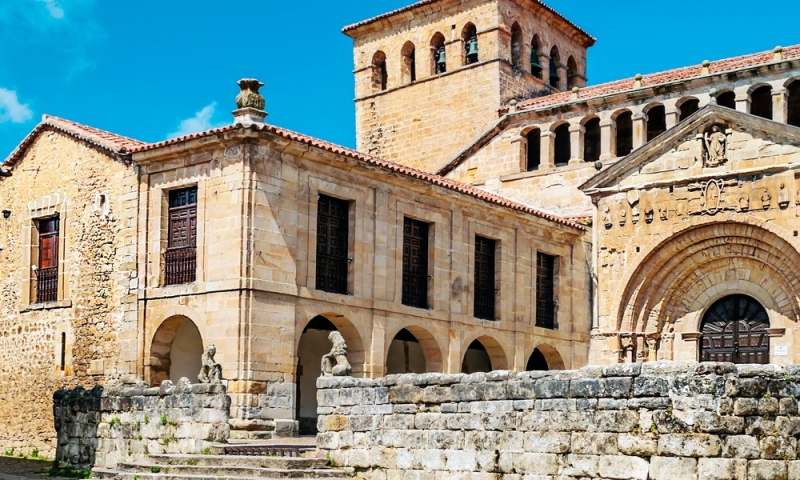
Founded in the 6th century, the small museum town is recognized as the most beautiful in Cantabria and is popular with tourists all year round. The cobblestone streets, among houses decorated with the coats of arms of ancient families, are home to many unusual museums, from The Waffle Museumto Museum of Torture and Inquisition. Here you can relax calmly (bustle is not typical for Cantabria) in an authentic bar on one of the cramped medieval streets.
Comillas
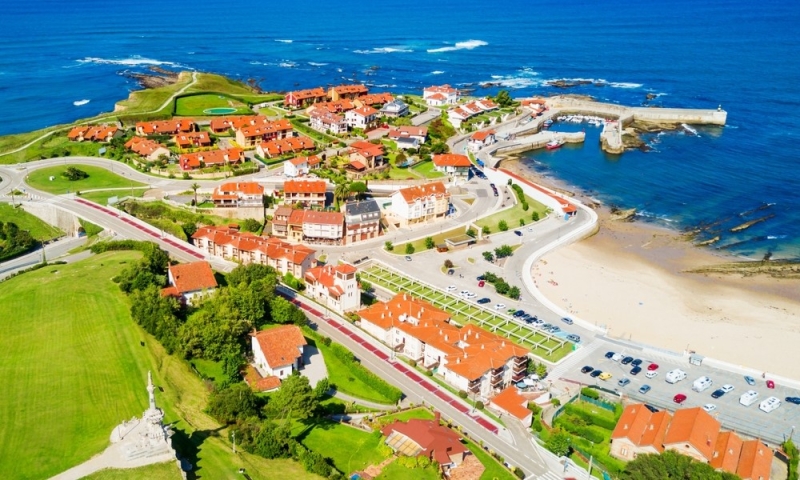
In this city, where the royal family has spent their summers since the late 19th century, we learned of another type of travel stress besides buzzing feet, possible bedbugs and fatigue. The city albergue was closed, and there were no rooms in hotels.
Sometimes on the Camino de Santiago it is better to call hostels in advance: even in low season there may not be enough space for everyone. And there is a risk of spending an unforgettable night on a damp beach under the autumn Spanish sky.
But, firstly, not all municipal albergues give reservations. Then you need to quickly move your feet along the road. Secondly, surprisingly, many Spaniards do not speak English. Even in hostels where thousands of pilgrims come, you rarely meet English-speaking hosts. Therefore, my spoken Spanish has come to the rescue more than once.
The hotel administrator in Comillas, after listening to my complaints, found an inexpensive room in a cozy hotel at a friends tavern, where almost no one lived. The other pilgrims simply did not know about her.
In Comillas you can see a building with mosaics El Capricho Gaudi, Palace of Sobrellano and the old city center rich in history.
Gijon and the saving pause
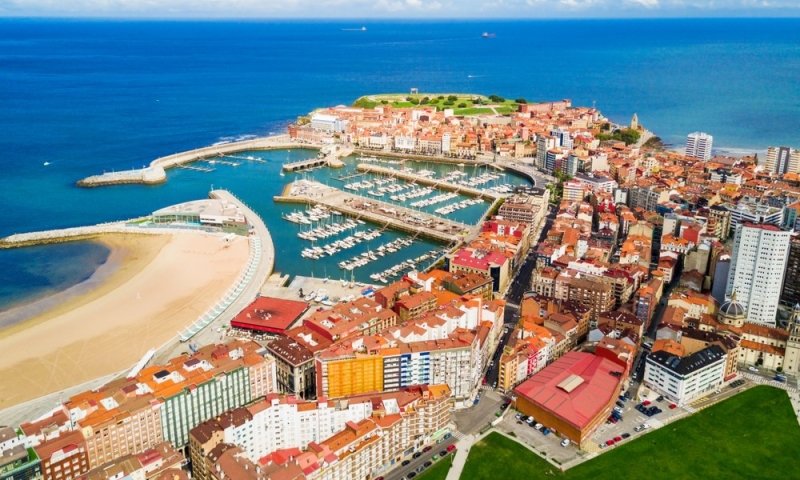
About halfway through the journey, we, like many pilgrims, stopped for the day at the city of Gijon to relax physically and restore mental balance. After all, daily long treks are an extraordinary strain on the muscles and psyche.
Gijon is the largest port city in Asturias, which grew up on the site of a Celtic fishing village. The first dock of the port of El Musel was built at the end of the 15th century, but Gijon was heavily damaged by bombing during the Civil War. Only some historical parts have survived. For example, the old town on the cape and the fishing area on the Cimavilla Peninsula. In the center of Gijon there is a square Plaza Mayor with arcades and a fancy 18th-century palace Palacio de Revillagigedo.
The main thing a pilgrim needs to do in this city is to get a good night’s sleep in one of the good hotels:
- Gijon Surf Hostel (rating 8.4) – hostel, from 2,100 rubles per night*.
- Hotel Central (rating 9.2) – two-star hotel, from 4,170 rubles per night*.
- El Môderne Hotel (rating 9.3) – four-star hotel, from 10,200 rubles per night*.
Cadavedo
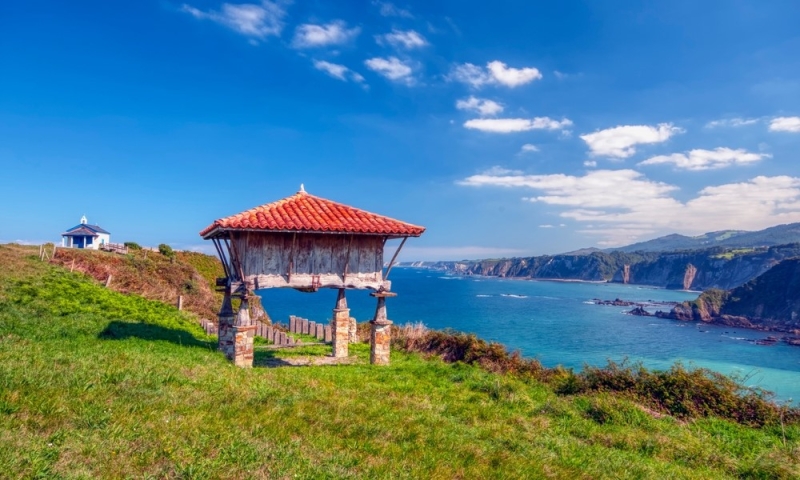
A modest village with typical Spanish streets and a small chapel Ermita Regalina occupied a special place in our trip. The road to Cadavedo was long – 34 kilometers in the rain, part of which we walked up and down along endless serpentine roads. And when late in the evening, barely moving our legs, we reached the albergue, we were disappointed. The hostel was cramped, uncomfortable, with a dirty kitchen, strange guests and a loud bathroom. Due to extreme fatigue, it was impossible to sleep on the small folding bed. The decision came by itself: at 4 am, having quietly gathered, we set out on the route.
There was everything there: a hilly, dark, even more mystical forest in the light of a lantern, an empty night highway, a powerful black ocean roaring behind the trees and an incredibly beautiful dawn on a beach hidden among the cliffs. Never before have I seen the Milky Way so clearly shining across the sky, and the sparks of falling stars flashing so often.
As the pilgrims say: “When you get tired and finally loosen your control over events, the path itself will throw up adventures that will leave a mark on your soul forever.”
Luarca
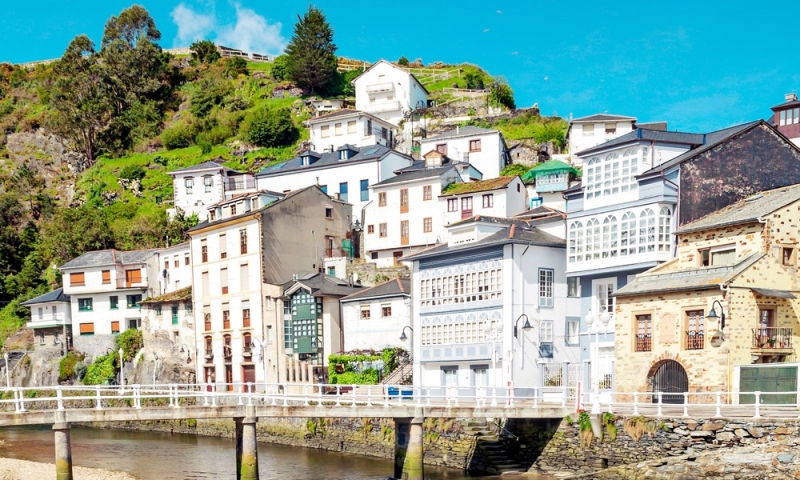
A small coastal town where luxurious villas coexist with neat white fishermen’s houses clinging to a picturesque bay. Luarca contains remains of Celtic settlements and Roman dwellings, reminiscent of its historical past.
Here you can wander through the streets for a long time, crossing bridges, of which there are seven in little Luarca. Admire the palaces of Marquis Gamoned and De Ferrer XVI-XVIII centuries. Take a look around like a doll town from the observation deck next to the Atalaya Chapel. And then slowly drink cool cider in one of the ciderias for which Asturias is famous. Luarca is the standard of a leisurely holiday surrounded by friendly and welcoming Spaniards.
By the way, the owners of numerous Asturian apple orchards often share the harvest with pilgrims, placing boxes of fruit along the way.
Santiago de Compostela
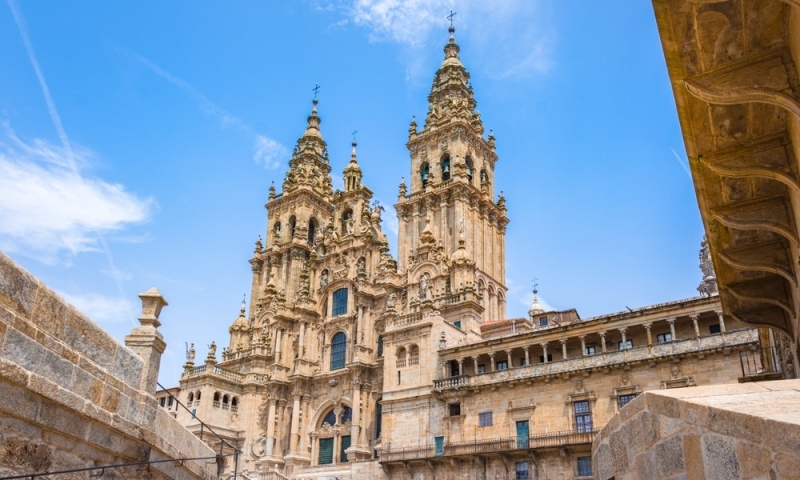
The last 40 km of the Northern Route coincide with the most famous route of the Camino de Santiago – the French Way, or Camino Française. Many new people appear, albergues increase in size, but are inferior in comfort and intimacy. Familiar seascapes and the sound of waves are replaced by fields, the singing of forest birds and other, calm beauty of nature.
Santiago de Compostela is the main city of the route, where all paths and roads lead. Finding ourselves in the cobblestone square in front of the grandiose Cathedral of St. James filled with dozens of pilgrims, we finally realized: this is it! Some of the pilgrims were lying on the ground, arms outstretched and eyes closed, some were laughing, some were silently looking at the temple.
Old Town Santiago de Compostela is a UNESCO World Heritage Site and a concentrate of architectural art. Palace Rajoy (former prison and Town Hall, and now the Administration building), Benedictine monastery San Martino Pinario, 12th century church Santa Maria Real do Sar – just a little of what you will see while wandering the streets of the city.
The Cathedral of St. James is the largest Romanesque church in Spain and a stronghold of Spanish Catholicism. According to legend, the relics of the Apostle James are kept here. And there is also the largest censer in the world Botafumeiro weighing 80 kg and 160 cm high. It will take eight monks to set this huge thing in motion.
Our last albergue on the way Seminario Menor is located in an ancient five-story seminary building. Looking from its windows at the setting sun, we slowly realized: hundreds of kilometers traveled, muscle pain and hours spent contemplating beauty – all this was real with us.
*Prices are current at the time of publication.

